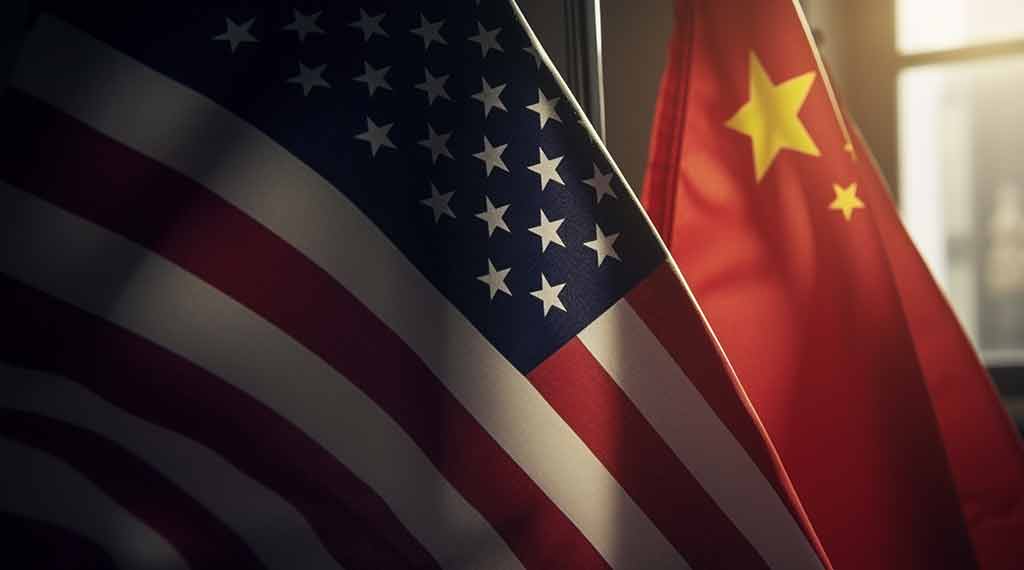The operational impact of America’s greatest strategic failure

In our forthcoming book, Embracing Communist China: America’s Greatest Strategic Failure, we make the case that the United States has made two fundamental and interrelated strategic mistakes. The first is the failure to comprehend the threat from the People’s Republic of China (PRC). The second, and pertinent to this article, is the failure of the U.S. government to balance against this threat and to have prepared the defenses required to deter or, in the worst case, defeat the People’s Liberation Army (PLA).
This past week, additional evidence supporting this later point was revealed in a report by the Navy Times entitled “Supplier bottlenecks threaten US Navy effort to grow arms stockpiles”. The article describes how the U.S. Department of Defense, specifically the U.S. Navy, allowed itself to be put into the position of being unable to deter or defeat a PRC invasion of Taiwan or any other major military operation in the Western Pacific, all because of its willful blindness to perceive the true, hard-power threat built by the Chinese Communist Party (CCP) over the past 30 years.
The Navy Times article outlines how this failure to understand the threat from the PLA impacted the most basic function and purpose of having a military—having enough ammunition to destroy the enemy. Specifically, in this case, a navy that was powerful enough to fight and win a war at sea. Shockingly, the article reports, “the Navy stopped building torpedoes after the Cold War. Service officials, facing tighter post-war budgets, decided they had sufficient inventory for a fleet without a real threat. Missile programs continued as the Navy upgraded to newer and more capable systems over time, but missile procurement plans often faced outsized cuts during tight budget years, including in the mid-2010s. Later in the decade, however, when the Defense Department recognized China as a top adversary that would drive the armed services’ planning and spending, the Navy restarted torpedo production.” Recognizing the magnitude of this revelation, the U.S. Department of Defense had become so conditioned by the fall of the Soviet Union and the so-called “end of history” that they could not even contemplate the PRC being a threat.
This begs the question of how it was not until the Trump administration that the DoD suddenly “recognized” the PRC as a “top adversary.” How is it possible that it was not until 2020 that the US DoD began to recognize that they needed more torpedoes and other critically important weapons?
The Pentagon’s forgetfulness of their responsibilities, as required by great power politics, was fueled by two other factors: first, the ideological push by the pro-CCP engagement cadres found in academia, think tanks, and other elements of our government; and second, the smaller wars in the Middle East that consumed the attention of our military leadership for nearly 35 years since Operation Desert Storm. The combination of all these forces resulted in what can only be described as an incredible reversal in our national history, with the U.S. Navy stopping the production of torpedoes.
The failure to stop the production of U.S. Navy Mk-48 heavy-weight torpedoes is critically important, as most defense analysts in Washington, D.C., and around the world have assumed that the U.S. maintained one advantage over the PLA, and that was in one domain—undersea warfare. Now, the country is learning that, for the past 20 years, the cessation of the production of these heavy-weight torpedoes cannot be turned back on with the flick of a switch. As the article explains in detail, the resumption of the torpedo production line has been much more problematic than anyone in the U.S. Navy anticipated and is extending production delivery dates later and later into this “Decade of Concern (2020-2030).”
This infected thinking did not only impact Mk-48 torpedo production but also adversely impacted other critically important munitions that are required for any war at sea against the PLA Navy in the Western Pacific, like the Long-Range Anti-Ship Missiles (LRASM), the Maritime Strike Tomahawk, and the Standard Missile. As the article’s author, Megan Eckstein, states, “This is a nightmare scenario.”
The U.S. Navy’s decision to stop the production of the Mk-48 torpedo and the DoD’s failure to push these other critically important munitions (LRASM, Maritime Strike Tomahawk, and the Standard Missile) are prima facie evidence of America’s greatest failure to perceive and respond appropriately to the threat from the PRC. Yet, there are still some in DC who downplay the PLA, for instance, who tell us that the PLAN’s aircraft carrier flight operations east of Taiwan are not that impressive, or who continue to promote outright falsehoods that PLAN ships cannot sail more than 500 nautical miles from the mainland.
Lamentably, the U.S.’s national security community for the past 30 years has sat by and forgotten the lessons learned from WWII and the Cold War. These experts and leaders squandered, if not outright gave up, the birthright of freedom for avarice, greed, or worse—for a failed belief in the ideology of globalism where war and great power competition would be things of the past.
This report is as damning as any we have witnessed. It will be welcomed by U.S. enemies and a terrific shock to our allies and partners like Japan and Taiwan. Its indictment must be confronted and addressed by the Navy. The Navy is not unique in its forgetting of what is necessary to fight a high-intensity, great-power war. The Army, Air Force, Marines, Space Force, and Coast Guard need a hard, close examination of their abilities to complete their missions against a formidable, great-power enemy.
- Victory over the PRC: Why engagement makes war with Beijing more likely - April 24, 2024
- The US must end engagement (and Biden’s neo-Engagement) with the PRC now - April 10, 2024
- How to address the CCP threat: Engagement, defeatism, or victory - April 3, 2024
